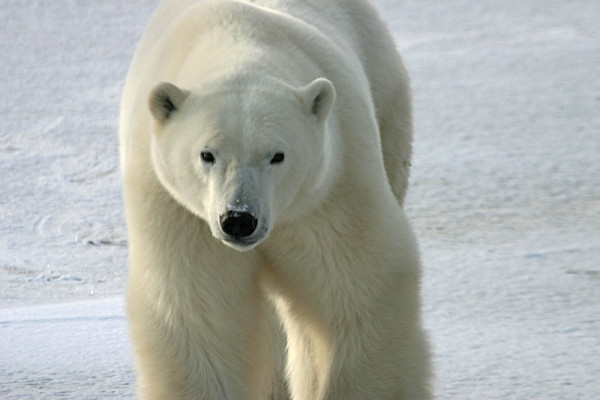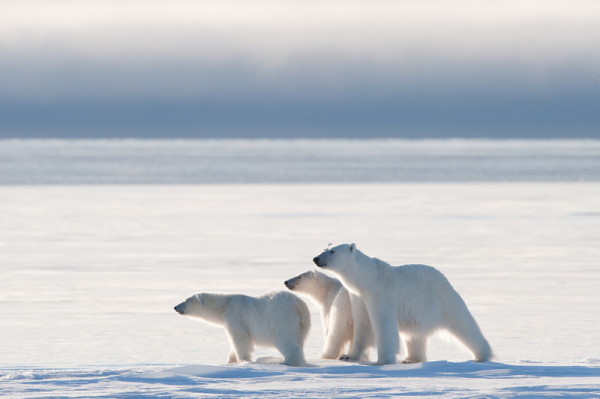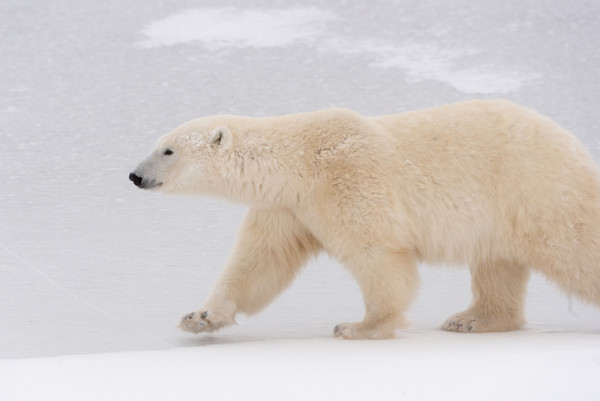Symbol and sustenance: The complex role of polar bears
To many Canadians, polar bears are a majestic national symbol and poster animal for the fight against climate change as shrinking sea ice threatens the species’ future survival.

To many in Northern communities, however, nanuq (as they’re known in the Inuvialuktun and Inuktitut languages) are a vital part of their livelihoods. They’re a source of art, lore, identity and sustenance.
“Polar bears are a food source,” says Frank Pokiak, former chair of the Inuvialuit Game Council and an experienced Inuvialuit hunter from the coastal community of Tuktoyaktuk, N.W.T. “Some people make some income out of it, from selling the hides. The money helps them buy food and clothing for their families.”
Meat from polar bears and other Arctic wildlife is central to the traditional diet, and hunting is an important part of life in the North. In the Inuvialuit Settlement Region, harvested meat and fish makes up half or more of the daily consumption for nearly 40 per cent of households.
Threats to polar bear, are threats to these people.
Did you know? Canada may have some of the longest lasting ice habitat in the world for polar bears and other ice-dependent species. WWF works with northern communities and governments to conserve key areas for the future of wildlife and people. Find out more at wwf.ca/arctichome
And so it’s vital to northerners that polar bears remain a key part of the Arctic ecosystem. That’s why they have developed a deep knowledge and strong respect for the species. And, with their generations of knowledge and experience, northerners play a critical role in managing these populations. “Our 1984 land claim agreement gave us responsibility for managing our wildlife,” Pokiak explains. “We take it really seriously. We don’t want to deplete species that we harvest and use; we want to see them there for generations to come.”
The majority of polar bear subpopulations in Canada are stable or increasing, indicating that the Inuit polar bear hunt is well-managed and sustainable. One of the few regions where we are observing a decline in polar bear numbers is in the Southern Beaufort Sea. Unless addressed, climate change will impact the status of polar bears in the future.
The scientific community hasn’t always taken seriously the traditional knowledge that has guided northern peoples for thousands of years. “Traditional knowledge is spoken, not written,” Pokiak said. “It can be hard to share it with the outside world. Scientists need to listen.”
Today, researchers increasingly recognize the important role that local communities and expertise must play in management. “There is an incredibly important role for traditional knowledge in decision-making,” says Rachel Theoret-Gosselin, specialist for WWF-Canada’s Eastern Arctic work. “Most scientific studies in the North are done in the summer and are often short-term. But Inuit are on the land year-round and have been around for 1,000 years. They have a knowledge of patterns that science has not had the opportunity to observe and document yet.”
WWF-Canada works with communities to support their environmental concerns and actions. In Chesterfield Inlet, for example, a community workshop recently took place to examine the impacts of increased shipping. Community members observed a reduction in marine mammals in the area as shipping increased. WWF worked with them to map key areas for the most valued species and identify mitigation measures that are acceptable to the community and could help to reduce the impacts they are experiencing.
“We are using Inuit knowledge to help gain insights into patterns that science cannot yet explain,” says Theoret-Gosselin. “By relying on both traditional knowledge and scientific research, we can ensure that the most sensitive areas are protected, to ensure that important new economic opportunities can co-exist for the long-term with ecosystems, species and communities that have been here for millennia.”



